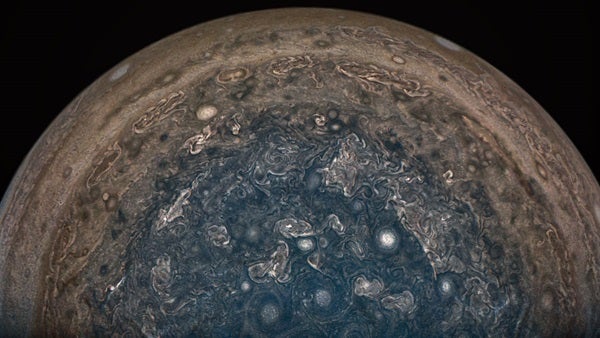Alas, poor Juno’s polar orbit. We knew it.
NASA’s Jupiter orbiter, which arrived at our largest planet in July, has been given new mission parameters: stay in its 53-day orbit instead of burning into a 14-day polar orbit. At perijove, the closest point to the planet, it skims just 2,600 miles (4,184 km) above the top layer of clouds. The probe then measures the weather and magnetic fields of the planet, trying to determine the interior of the planet. Because the craft flies over the ecliptic of Jupiter, it poses little risk of collision with any of the jovian moons.
A planned thruster firing in August went awry. That would have shrunk the orbit down, with a second burn bringing it closer to a roughly circular orbit so close that it would have fried the imaging instrument. The rest of the instruments are buried in a radiation-proof “vault” deep within the probe. Another attempt in October was thwarted by faulty helium valves, leading the team to skip a third attempt in October at perijove.
By staying in the 53-day orbit, NASA says they’ll be able to get “bonus science” out of the mission, including the effects of its powerful radiation belts moving outward from the planet.
This will also allow the team to perform an extended mission. If approved, Juno would continue to gather science on the planet and add to the body of evidence needed to determine whether the core of Jupiter is a fluid or a solid in nature. Initially, after its mission was complete in 2018, the craft was going to plunge into Jupiter for a final view.










